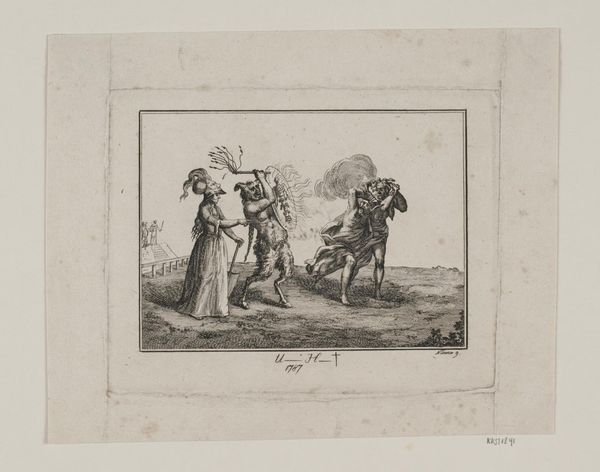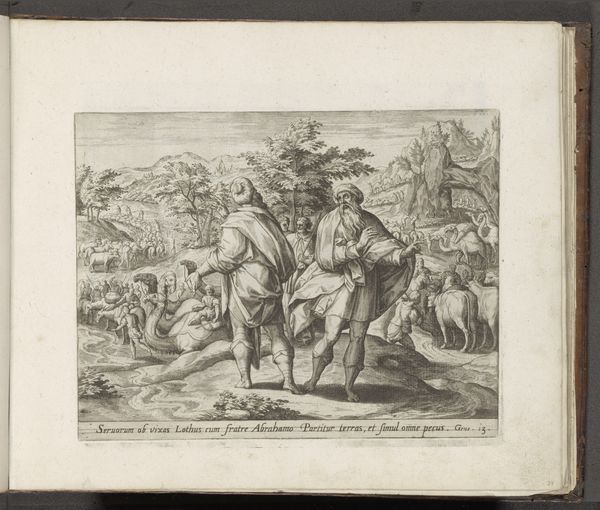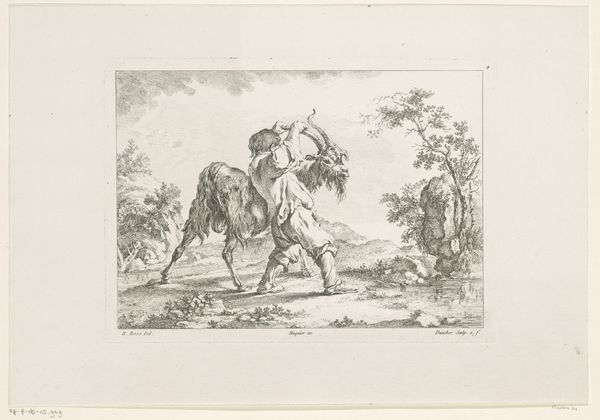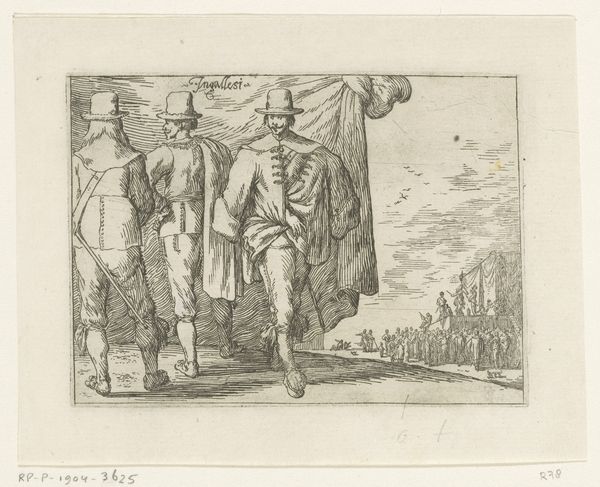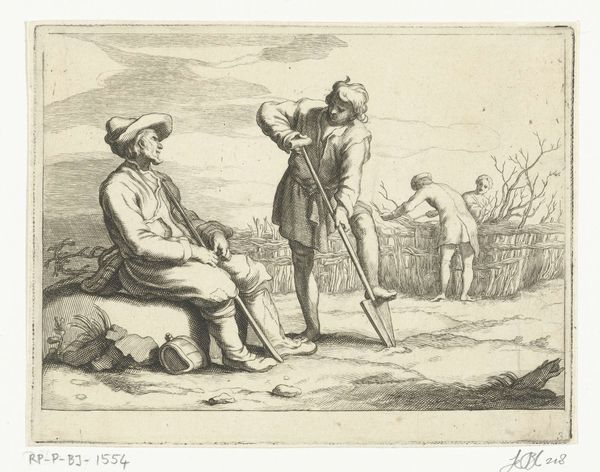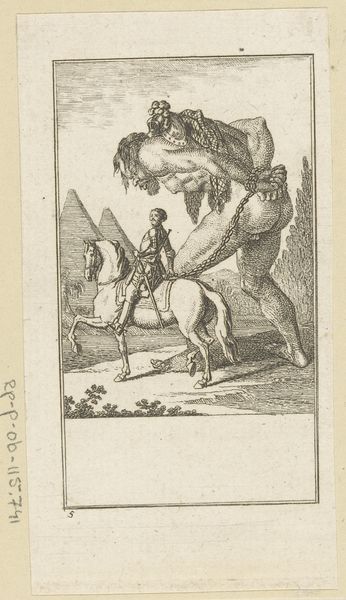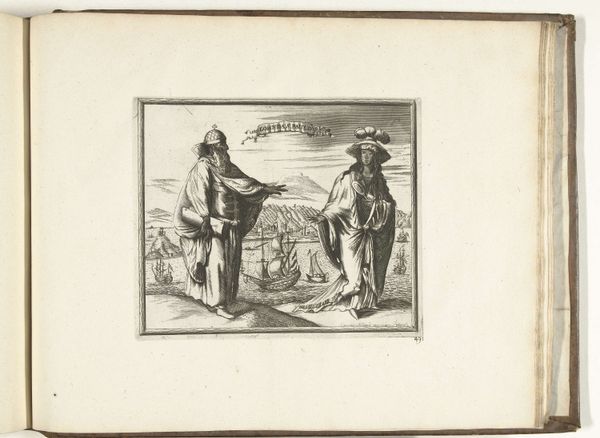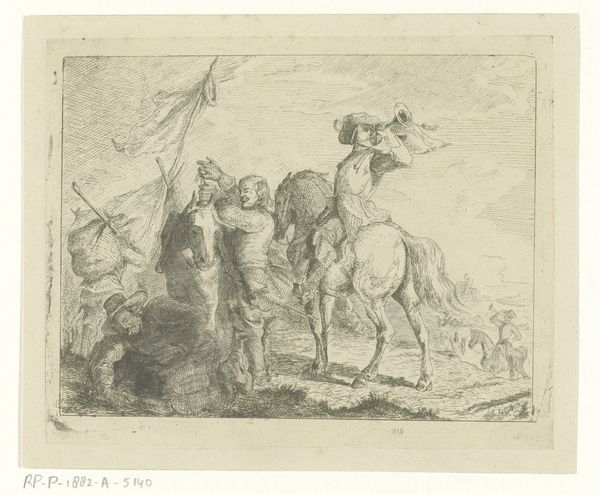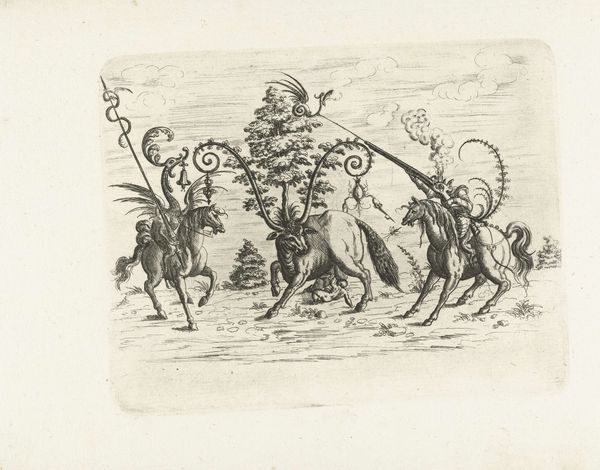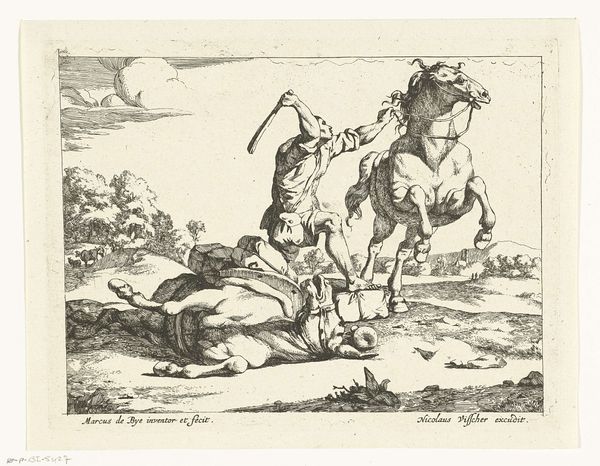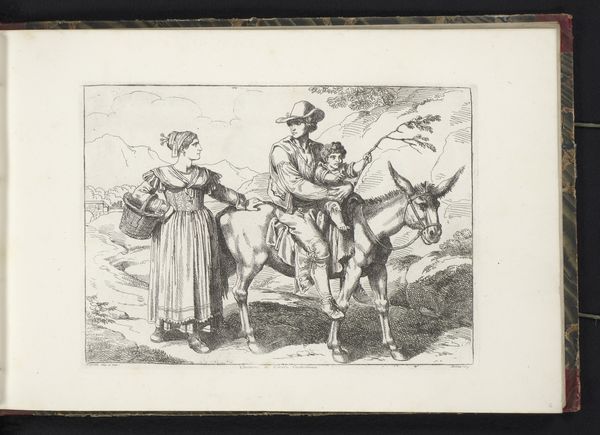
Twee Hongaren naast een paard, een veldslag in de achtergrond 1636
0:00
0:00
johannwilhelmbaur
Rijksmuseum
print, etching
#
baroque
# print
#
etching
#
landscape
#
figuration
#
horse
Dimensions: height 80 mm, width 110 mm
Copyright: Rijks Museum: Open Domain
Editor: This etching by Johann Wilhelm Baur, titled "Two Hungarians Next to a Horse, a Battle in the Background," dates to 1636. It's… unsettling, with a stark contrast between the composed figures in the foreground and the chaos implied by the distant battle. How do you interpret this work? Curator: I see a deliberate commentary on power and identity during a period of intense geopolitical tension. Baur is placing these figures – presumably Hungarian soldiers – within a very specific historical context: the conflicts between the Habsburg Empire and the Ottoman Empire. This wasn’t simply about land; it was a clash of cultures, religions, and empires, fraught with violence and the subjugation of diverse populations. Editor: So, the contrast highlights the individuals versus the collective experience of war? Curator: More than that, I think. Consider the "Hungarian" identity being presented here. Baur was German. How might his depiction of these figures reinforce or challenge prevailing European views of people on the periphery of the Habsburg empire? Are they romanticized? Are they depicted as 'other'? What does it mean to portray them against a backdrop of battle? Editor: I see what you mean. It makes you think about the artist's perspective and the stereotypes he might be playing into. Curator: Exactly. And about the relationship between those in power and those caught in the crossfire of these large historical forces. How might ideas of national identity be shaped during times of conflict? Editor: That makes me see the print in a new light, it is more than just a historical depiction; it's about power, perspective, and identity. Thanks. Curator: My pleasure. It reminds us that art, even seemingly simple depictions, can be powerful tools for understanding history and challenging dominant narratives.
Comments
No comments
Be the first to comment and join the conversation on the ultimate creative platform.
